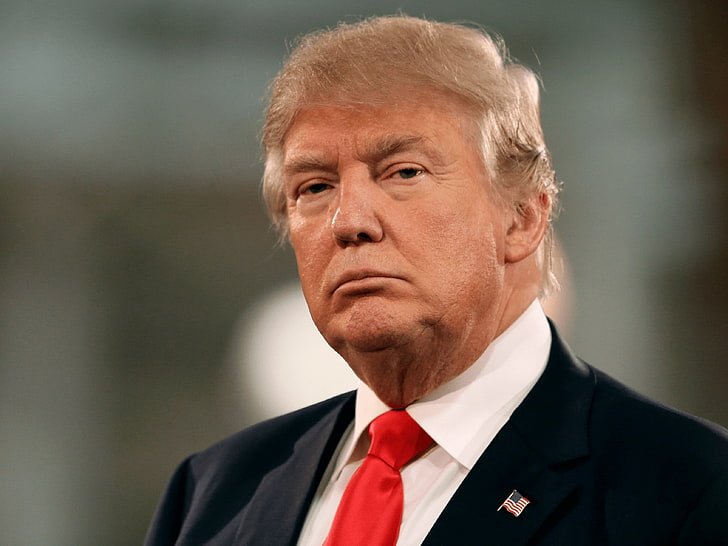Table of Contents
Toggle
A Moment of Reflection: Maryam Nawaz’s Prayer Pause in Punjab Assembly
In a memorable moment during a recent session of the Punjab Assembly, Chief Minister Maryam Nawaz paused proceedings for a brief five-minute break to offer her Asr (afternoon) prayer. What may have appeared to some as a small gesture carried a powerful message—underscoring the deep personal commitment she holds toward her faith and illuminating the importance of spiritual discipline, even amid the most demanding responsibilities of governance.
1. A Gentle Request Highlights Priorities
As provincial legislators sat through an intense agenda filled with pressing legislative debates, policy questions, and public service discussions, Maryam Nawaz rose from her seat and respectfully requested a short recess. Her plea was simple yet meaningful: “Allow me five minutes for Asr prayer.”
In that brief statement, she balanced reverence and eloquence—reinforcing her image as a leader who seamlessly blends the demands of public duty with unwavering religious devotion. The request was granted unanimously, showcasing the shared understanding of faith’s importance within our social fabric.
2. Choosing Prayer Amid High-Stakes Governance
In modern political life, where urgency often eclipses introspection, it’s rare to witness elected representatives stopping to honor personal convictions in real-time. But that’s precisely what Chief Minister Maryam Nawaz did. By choosing to observe the Asr prayer ritual, she acknowledged that no matter how critical the assembly’s agenda might have been, her spiritual practice deserved precedence.
This may seem like a small deviation in a routine day of public service, but its implications are profound—from personal humility to public demonstration of one’s beliefs.
3. A Touching Moment That Resounded Nationwide
The gesture sparked warmth and admiration among the public. Media outlets, social networks, and everyday citizens alike lauded her decision. Many users on Twitter, Facebook, and Instagram thanked her for the reminder that even amid hard politics, faith can—and should—be a guiding force.
A popular sentiment emerged: “If the chief minister can take five minutes out for prayer, so can I.” Experts in sociology and public affairs highlighted how this gesture offered citizens a new lens through which to view leadership—not just in terms of policies and governance, but also in moral and spiritual alignment.
4. Balancing Faith and Professional Responsibility
Maryam Nawaz’s prayer pause offered a valuable lesson in professional life for people from all walks of society. We live in bustling, deadline-driven environments where “busy” has become synonymous with “better.” Yet, for millions of practicing Muslims around the world, prayer punctuates the daily rhythm—providing structure, discipline, and spiritual grounding.
When a high-ranking official like Maryam Nawaz chooses to honor that rhythm during official business, it represents a demonstration of unity between personal beliefs and public duties. She reaffirmed that with conscious planning, one can honor spiritual obligations without compromising professional integrity—or vice versa.
5. Leading by Example: A Touchstone for Women in Leadership
The impact of this moment was magnified because Maryam Nawaz is a prominent female political figure in a context where leadership representation is evolving. Her prayer pause resonated not just with individuals striving to balance work and faith, but especially with women navigating demanding roles in sociopolitical arenas.
Witnessing a female leader prioritize spiritual practice—even within formal institutional settings—sent a message of empowerment and authenticity. It reassured women that they need not strip away their religious identity to succeed professionally. To the contrary, those identities can coexist harmoniously and even enrich one’s approach to leadership.
6. A Moment that Humanized Politics
Political life is often viewed as abstract or disconnected from everyday experiences. With her heartfelt gesture, Maryam Nawaz refreshed the image of politics by bringing it closer to ordinary life. She became relatable—not just as a policymaker, but as a person who understands the rhythms of daily life: breaking for prayer, cooking meals, caring for family.
Such images have emotional resonance. They invite appreciation not only from followers but also from critics and observers who typically value decorum and respect in public life. By reclaiming a moment for personal devotion, Maryam Nawaz underscored that public service need not diminish the human elements that underlie our social connections.
7. Spread of Praise Across Social Media
Within hours, social media feeds across Pakistan were brimming with gratitude and admiration. A sample snapshot of trending comments:
“Chief Minister Maryam Nawaz reminded us today that faith doesn’t take a backseat—even in assembly halls.”
“In admiration of her humility. Indeed, public life needs more moments like this.”
Pakistani influencers with large followings saw the gesture as a reminder of collective values. Editors of various English- and Urdu-language publications reflected on it as evidence that religious devotion has a rightful place in governance—adding an ethical dimension to administrative proceedings.
8. The Assembly’s Respectful Response
Members of the Punjab Assembly responded with unity and respect. Male and female lawmakers from various political affiliations respected and supported the short recess—mirroring broader cultural traditions that hold prayer and spirituality in high esteem.
This complicit solidarity underscored Pakistan’s constitutional identity as a Muslim-majority country. It radiated a sense of shared values—translating political diversity into common acknowledgment of religious duty.
9. What This Says About Institutional Culture
Maryam Nawaz’s request also reflected a positive tone within government institutions. It signals progress toward accommodating religious practices—for example, providing spaces for prayer, respecting prayer times, and enabling leaders or staff to fulfill their spiritual obligations without friction.
In many countries, legislative and professional environments miss this nuance—leading individuals to skip prayers or feel pressured to compromise their beliefs. By normalizing the integration of work and worship, Maryam Nawaz helped shift the narrative toward a more inclusive public culture.
10. Faith as Source of Strength in Governance
Prayer has long been associated with clarity, reflection, and humility. For a chief minister whose portfolio includes public health, education reform, economic development, security, and welfare, these prayer breaks may become more than routine—they’re a moment to reconnect with personal values before making decisions that shape millions of lives.
This dimension of spirituality potentially enriched her leadership—by reminding her (and observers) that decisions aren’t only political or bureaucratic, but rooted in deep moral frameworks.
11. Inspiration Beyond Politics
What began as a personal devout act rippled outward, inspiring professionals across sectors:
-
A doctor emphasized that prayer breaks bring mental clarity during medical emergencies.
-
Educators expressed that brief pauses between lectures can restore focus and emotional balance.
-
Entrepreneurs and small-business owners recognized that prayer can offer perspective during hectic days.
These reflections demonstrate how one simple pause can catalyze cultural transformation, highlighting that spiritual intervals are not distractions—they’re a part of living well.
12. Balancing Act: Lessons for Personal Development
In an era inundated with daily agendas—emails, meetings, deliverables, deadlines—many people wrestle with maintaining balance. Maryam Nawaz’s example condenses two timeless truths:
-
One’s spiritual commitments can—and do—coexist with vigorous public or professional life.
-
Even short pauses for reflection can recalibrate focus, priorities, and mental well-being.
In the book of human rhythms—work, worship, rest—she showed how a small rhythm change can resonate broadly.
13. Religious Identity Embraced in Civic Engagement
For many Pakistani citizens, being Muslim isn’t just a private matter—it’s a civic marker. When public representatives honor their faith visibly, voters often feel validated and reassured that leaders share their values.
Maryam Nawaz reminded viewers that religious devotion and democratic engagement intersect—offering an inclusive vision of governance that does not sideline tradition, culture, or faith.
14. The Role of Habit and Infrastructure
Her gesture also showcases the importance of daily habit and organizational infrastructure. When assemblies—and workplaces—create the space and flexibility for prayer, it eases access for all who observe. Long-term, this can encourage:
-
Prayer room availability in public venues, corporate buildings, and campuses.
-
Reasonable scheduling flexibility to accommodate religious duties.
-
Greater awareness and normalizing of spiritual breaks across institutions.
15. A Symbolic Gesture with Lasting Impact
While five minutes may seem fleeting in an assembly full of deliberation, the symbolic depth of that gesture is enduring. It transcends mere optics—it signals to every citizen that governance is not detached from spirituality, and public life is not devoid of personal values.
Over time, these small moments accumulate—transforming expectations about what it means to lead: not just smartly, but soulfully.
___________________________________________________________________________________
___________________________________________________________________________________
16. Global Comparisons and Cultural Reflection
Around the world, leaders sometimes integrate faith into public life. Yet experiences vary—from official prayer compromises to more private devotion. Maryam Nawaz’s open respect for her practice aligns with a broader cultural reality in Pakistan, where public prayer is held in high regard, and religious identity informs public discourse.
By contrast, some Western democracies maintain a stricter public/private distinction, viewing overt religious expression in government as contentious. Pakistan’s example, under Maryam Nawaz’s lead, reflects a model where personal faith is part of daily civic life—and respected across the polity.
17. What Lies Ahead for Public Culture
Visible acts of prayer like this may inspire institutional reforms:
-
Elected officials might adopt set prayer intervals for legislative sessions.
-
Ministries or public offices may formalize support for spiritual practices.
-
Awareness campaigns could encourage workplaces to incorporate prayer-friendly policies.
In essence, Maryam Nawaz’s gesture may serve as a blueprint for a cultural shift—where prayer is woven into the cadence of public service, not adjunct to it.
18. Civic Unity in Shared Values
In a time when politics can divide over ideology or partisanship, prayer transcends such divisions. It’s a universal practice shared by the majority of Pakistanis—making it a natural point of unity.
By leading with that shared value, Maryam Nawaz tapped into something transcendent: a reminder that beneath the tumult of policy and debate, citizens share deeper ties of faith, heritage, and collective purpose.
19. Reflections from Religious Scholars
Prominent religious figures and Islamic scholars joined in to commend her behavior. They emphasized that fulfilling prayer obligations—especially in gatherings and official spaces—has historical precedence and spiritual merit. Their endorsements situated her gesture firmly within established religious practice and responsibility.
20. Final Thoughts: Integration as Empowerment
Maryam Nawaz’s decision to stand for prayer in the assembly is more than a personal act—it’s a cultural message. It says that leadership need not chase spiritual neutrality. Instead, leadership can embrace faith with dignity. It shows that modern governance—with its schedules and pressures—can—and perhaps should—accommodate deeply human rhythms.
By taking five minutes to pray, Maryam Nawaz projected unity—between faith and formality, personal and public, woman and worker, prayer and policymaking. That moment didn’t just pass; it echoed across institutions, homes, and hearts—letting us recall that even in the corridors of power, mindful presence enriches purpose.
16. Global Comparisons and Cultural Reflection
Around the world, leaders sometimes integrate faith into public life. Yet experiences vary—from official prayer compromises to more private devotion. Maryam Nawaz’s open respect for her practice aligns with a broader cultural reality in Pakistan, where public prayer is held in high regard, and religious identity informs public discourse.
By contrast, some Western democracies maintain a stricter public/private distinction, viewing overt religious expression in government as contentious. Pakistan’s example, under Maryam Nawaz’s lead, reflects a model where personal faith is part of daily civic life—and respected across the polity.
17. What Lies Ahead for Public Culture
Visible acts of prayer like this may inspire institutional reforms:
-
Elected officials might adopt set prayer intervals for legislative sessions.
-
Ministries or public offices may formalize support for spiritual practices.
-
Awareness campaigns could encourage workplaces to incorporate prayer-friendly policies.
In essence, Maryam Nawaz’s gesture may serve as a blueprint for a cultural shift—where prayer is woven into the cadence of public service, not adjunct to it.
18. Civic Unity in Shared Values
In a time when politics can divide over ideology or partisanship, prayer transcends such divisions. It’s a universal practice shared by the majority of Pakistanis—making it a natural point of unity.
By leading with that shared value, Maryam Nawaz tapped into something transcendent: a reminder that beneath the tumult of policy and debate, citizens share deeper ties of faith, heritage, and collective purpose.
19. Reflections from Religious Scholars
Prominent religious figures and Islamic scholars joined in to commend her behavior. They emphasized that fulfilling prayer obligations—especially in gatherings and official spaces—has historical precedence and spiritual merit. Their endorsements situated her gesture firmly within established religious practice and responsibility.
20. Final Thoughts: Integration as Empowerment
Maryam Nawaz’s decision to stand for prayer in the assembly is more than a personal act—it’s a cultural message. It says that leadership need not chase spiritual neutrality. Instead, leadership can embrace faith with dignity. It shows that modern governance—with its schedules and pressures—can—and perhaps should—accommodate deeply human rhythms.
By taking five minutes to pray, Maryam Nawaz projected unity—between faith and formality, personal and public, woman and worker, prayer and policymaking. That moment didn’t just pass; it echoed across institutions, homes, and hearts—letting us recall that even in the corridors of power, mindful presence enriches purpose.
16. Global Comparisons and Cultural Reflection
Around the world, leaders sometimes integrate faith into public life. Yet experiences vary—from official prayer compromises to more private devotion. Maryam Nawaz’s open respect for her practice aligns with a broader cultural reality in Pakistan, where public prayer is held in high regard, and religious identity informs public discourse.
By contrast, some Western democracies maintain a stricter public/private distinction, viewing overt religious expression in government as contentious. Pakistan’s example, under Maryam Nawaz’s lead, reflects a model where personal faith is part of daily civic life—and respected across the polity.
17. What Lies Ahead for Public Culture
Visible acts of prayer like this may inspire institutional reforms:
-
Elected officials might adopt set prayer intervals for legislative sessions.
-
Ministries or public offices may formalize support for spiritual practices.
-
Awareness campaigns could encourage workplaces to incorporate prayer-friendly policies.
In essence, Maryam Nawaz’s gesture may serve as a blueprint for a cultural shift—where prayer is woven into the cadence of public service, not adjunct to it.
18. Civic Unity in Shared Values
In a time when politics can divide over ideology or partisanship, prayer transcends such divisions. It’s a universal practice shared by the majority of Pakistanis—making it a natural point of unity.
By leading with that shared value, Maryam Nawaz tapped into something transcendent: a reminder that beneath the tumult of policy and debate, citizens share deeper ties of faith, heritage, and collective purpose.
19. Reflections from Religious Scholars
Prominent religious figures and Islamic scholars joined in to commend her behavior. They emphasized that fulfilling prayer obligations—especially in gatherings and official spaces—has historical precedence and spiritual merit. Their endorsements situated her gesture firmly within established religious practice and responsibility.
20. Final Thoughts: Integration as Empowerment
Maryam Nawaz’s decision to stand for prayer in the assembly is more than a personal act—it’s a cultural message. It says that leadership need not chase spiritual neutrality. Instead, leadership can embrace faith with dignity. It shows that modern governance—with its schedules and pressures—can—and perhaps should—accommodate deeply human rhythms.
By taking five minutes to pray, Maryam Nawaz projected unity—between faith and formality, personal and public, woman and worker, prayer and policymaking. That moment didn’t just pass; it echoed across institutions, homes, and hearts—letting us recall that even in the corridors of power, mindful presence enriches purpose.




